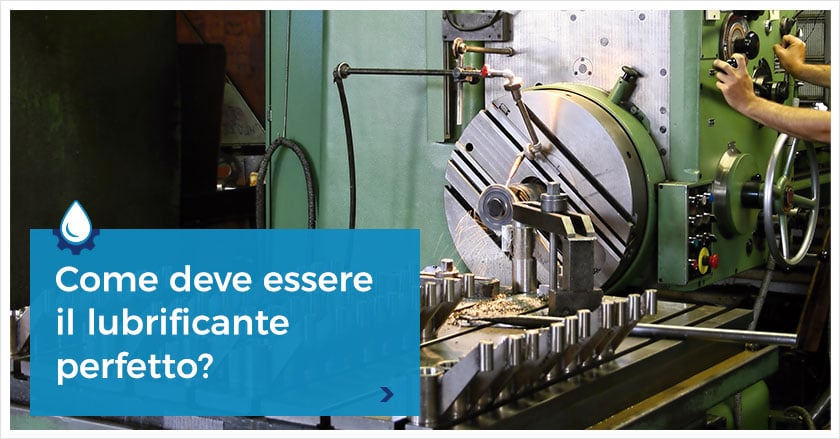
what should the perfect lubricant look like?
With the technological and engineering innovations leading to increasingly complex and automated machinery, the issue of industrial lubrication is becoming ever more critical and the common denominator is always the same: finding the best lubricants!
Whether they are synthetic-based mineral lubricants, the goal is only one: to increase the performance and durability of the components! So how can we be sure that our choice falls on the best lubricants out there?
Here are some good indicators!
1. The best lubricants resist low and high temperatures
Smooth and correct operation at low temperatures is not to be taken for granted for all types of lubricants.
The lower the temperature, the more the viscosity of a lubricant tends to increase, with a consequent increase in friction.
Using the best lubricants for your machinery means avoiding the risk of tearing or abrasion of the surfaces when starting from cold, also avoiding the consequent mechanical wear.
In case of excessively below zero freezing temperatures (from -10 ° C downwards) the best lubricants are those with synthetic bases, in particular fluorinated oils and greases.
The same goes for when the situation heats up: the best lubricants are those capable of guaranteeing continuous and safe performance up to and beyond 250 °, ensuring your components function correctly and for a long time.
High temperatures lead to oxidation processes (primary and secondary) with consequent evaporation of the protective film. Also in this case the synthetic bases offer better performance than the mineral ones.
2. The best lubricants allow you to control friction
What I am about to tell you may seem rather obvious, but it is not: the best lubricants are those that allow you to reduce or increase the coefficient of friction (according to your specific needs).
In principle, the basic purpose of a lubricant should be to promote sliding and thus to reduce friction. In other cases, however, the exact opposite is required (as in the case of soft closing systems which are increasingly used, for example, in the closing mechanisms of furniture doors).
A lubricant must indeed increase friction when needed: if we are using a solution with a high viscosity base oil and the friction surfaces slide over each other above the critical speed, the same lubricant can slow down the sliding instead of easing it.
It's more often the case, though, that lubricants must contribute to reducing friction. In these contexts, the use of a high viscosity solution or a non-calibrated one can cause a substantial increase in operating temperatures, with a consequent increase in the absorption of energy and therefore in contact wear for the component!
3. The best lubricants are resistant to mechanical loads
Misjudging the load conditions to which the friction surfaces are subjected is one of the most frequent and at the same time most damaging mistakes you can make.
How can the right lubricant help you in this case?
When the mechanical parts perform their function within more complex devices, it is easy to make a mistake, because it is not always possible to predict all the load conditions to which the systems are subjected. Proper design is certainly the first step in limiting the margin of error, but the use of the best lubricants can also come to your rescue.
A quality lubricating solution, which has a good load capacity, gives your components an additional protective barrier, able to make a real difference in case of need.
4. The best lubricants are compatible with other materials
Not all lubricants are compatible with materials other than metal, so it is important to know their interactions in advance.
It goes without saying that the best lubricants must be compatible with different types of materials: some of the best lubricants, for example, are not compatible with tires, as they can generate an increase of about 30% in volume, but this does not mean we can call them bad lubricants.
The same goes for compatibility with plastics or food use.
Speaking of quality solutions, it is evident from the list made so far that there are no better or worse lubricants; there are simply different solutions depending on the application. For this reason, instead of offering you standard products, we are committed to finding a customized lubricant solution, with you, that is totally respectful of your project and your needs.
Do you want to find the perfect lubricant for you? Tell us about your project and request a test sample.



